Between the 1960s and 1998, Northern Ireland was embroiled in an ethno-nationalist conflict known as The Troubles. While the conflict mostly took part in Northern Ireland, the violence sometimes spilled over to the Republic of Ireland, England and even mainland Europe.
A total of 3,532 people died during these years, and another 47,500+ were injured.
For many, Northern Ireland was a no-go zone throughout The Troubles, but there was one woman who looked past the discord and came to visit: 18-year-old Inga Maria Hauser.
Inga was a student from Munich, Germany. She was known for her intrepid spirit, and had ambitions of one day becoming a singer. Inga was also a keen artist.1
In March of 1988, Inga left her home in Munich and went backpacking across England and Scotland. On the 6th of April, 1988, Inga boarded a ferry in Scotland to Larne, Northern Ireland.
During her travels, she kept a diary which she used to document the sights she saw and the people she met.
That morning, she had written in her diary: “Morning has broken in Scotland. Breakfast in Inverness. Nice town. Have to see the Loch Ness monster one day. Going to Glasgow now. Snowy mountains and wild landscape. Scotland is beautiful.”2
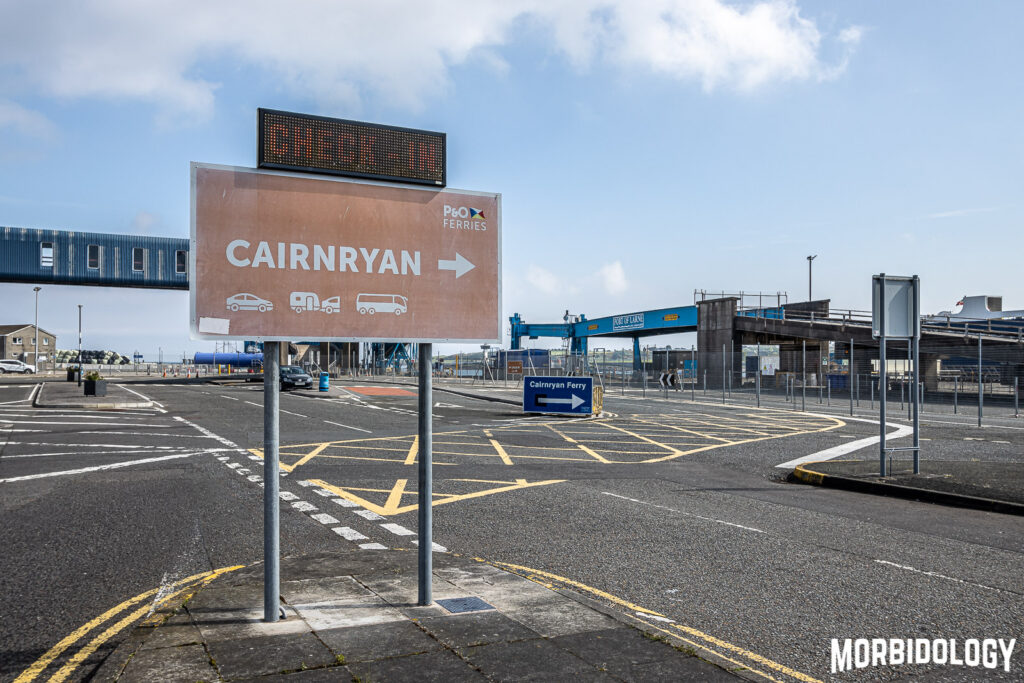
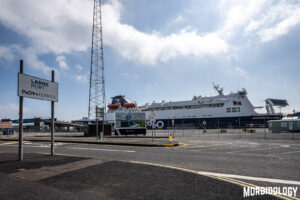
The ferry docked in Larne at 9:40PM. Inga stepped off the ferry and disappeared into thin air, only to turn up dead two weeks later.
On the 20th of April, a farmer was tending to his sheep in Ballypatrick Forest near the picturesque town of Ballycastle. As he walked into a remote clearing, he came across the lifeless body of Inga. She was partially nude and was face down on the grass.
Inga had been sexually assaulted and then beaten to death. Her neck had been broken by a heavy blow, most likely with some kind of object.
An investigation was immediately launched to try and uncover what had happened to Inga. It was discovered that she had sent her parents a postcard from Scotland, just before she boarded the ferry to Northern Ireland, but this was the last time that they had heard from her.
Inga’s diary also provided no clues. The last diary entry had come from her time in Scotland. There were no entries about Northern Ireland, which led to speculation that Inga was killed almost as soon as she stepped foot on the land.


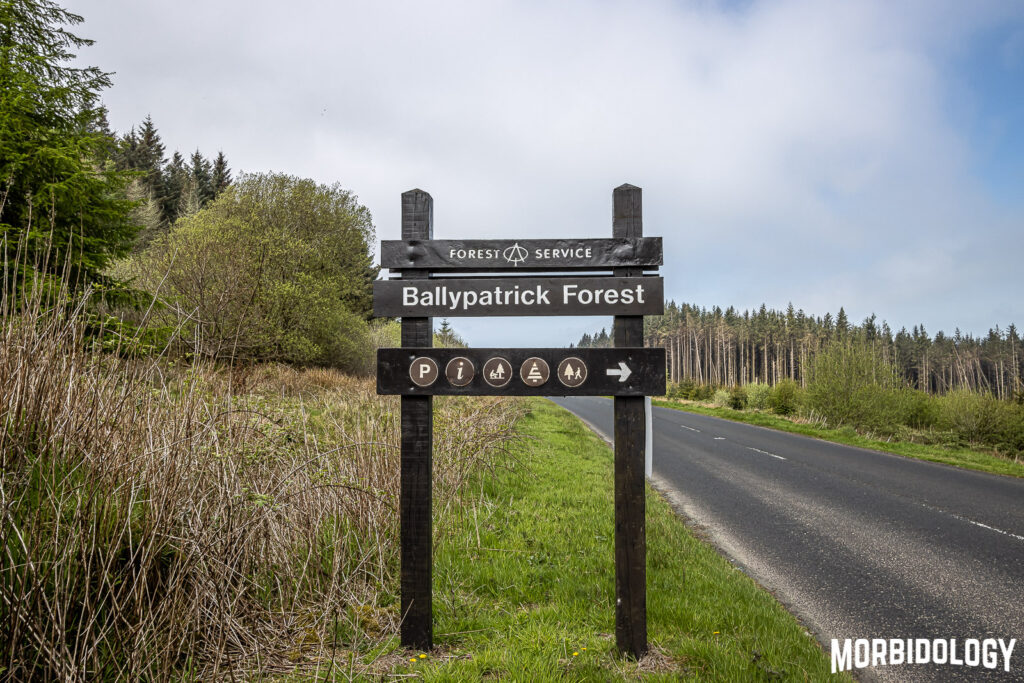
Police would attempt to track down every single person travelling on the ferry that evening. There were 442 passengers, but unfortunately the passenger logs were incomplete.
They were able to find one eyewitness who said that he had seen Inga on board the ferry. She was chatting with a man. Police speculated that as Inga chatted with this man, she was watched by her killer, who then approached her as she left the ferry and offered her a lift in his lorry.
Inga had written in her diary that she wasn’t sure where she was going to sleep that night, and that she had been running out of money. While it wasn’t like Inga to accept a ride from a stranger or to hitchhike, police believed that this was the most likely scenario.3
During the initial investigation, it was speculated that Inga had been held hostage by her killer for two weeks and then taken to Ballypatrick Forest where she was killed. However, it was later established that this wasn’t the case, that Inga had been killed right away.4
At the crime scene, forensic experts were able to retrieve a male DNA sample, and in an attempt to link it to a suspect, police asked the male residents of Ballycastle to volunteer to DNA testing. While a number of local men did come forward, none of their DNA came back as a match.
As DNA testing would advance over the years, police would routinely take another look at the unsolved case, and try to link the DNA to a suspect. Hundreds of men would take volunteer DNA tests. In fact, it was one of the largest DNA screenings ever undertaken in the United Kingdom.5
Then in 2009, there was a new development in the case.
It was revealed that the DNA sample showed similarities with the DNA profiles of a number of women who had been stored in the national database. It had come back as “similar” to the DNA of less than 100 women in Northern Ireland the rest of Northern Ireland.6
It was anticipated that this could finally crack the cold case, but unfortunately it wasn’t to be. Despite the fact that police have the DNA of the killer of Inga, the case gradually went cold.7
Over the years, theories and rumours have abounded. Some within the local community speculated that Inga was killed by a British soldier, while another local rumour was that she was killed by a female police officer who had found her with her father.
Another popular theory was that Inga was part of “Ireland’s Vanishing Triangle.” Between 1993 and 1998, a number of women vanished in the Republic of Ireland under very suspicious circumstances. It’s speculated that these women could be the victims of a serial killer. While there were a number of similarities between Inga and the women, there was never any concrete evidence to connect them.8
In 2011, police announced they had shifted their attention to an area just east of Ballymoney, and they began conducting house-to-house inquiries. According to a local, shortly after Inga was killed, they had seen a man in the area with scratches to his face.9
“I am asking for information, as opposed to statements or formal evidence. I recognise that some people may still feel uncomfortable talking directly to police, perhaps because of their past, or their allegiances. I am not interested in them for those reasons. I am only interested in what they know about Inga Maria and how it can help the inquiry. To that end, if someone feels unable or unwilling to talk to police, I would ask them to go to a trusted person who they feel would be in a position to pass the information to police.”
Det Supt Raymond Murray
The inquiries only led to a dead end.
The thirty year anniversary came and went in 2018, and police stated that they were launching a fresh appeal into the cold case. Shortly thereafter, a 58-year-old man and a 61-year-old man were arrested in connection with Inga’s murder. However, they were both released on bail.10
A couple of months later, police announced that they were submitting a file on the murder case to the Public Prosecution Service. This file contained evidence gathered against the 58-year-old man and also another person: a 56-year-old woman.
Police believed that the man had killed Inga and then the woman had helped him to cover it up. The Public Prosecution Service, however, said that there was not enough evidence against either, and declined to press charges.11
Inga Maria Hauser had come to Northern Ireland at a time when people were often too afraid. She had been looking forward to her trip, but almost as soon as she stepped off that ferry, she was taken to an isolated forest and brutally murdered.
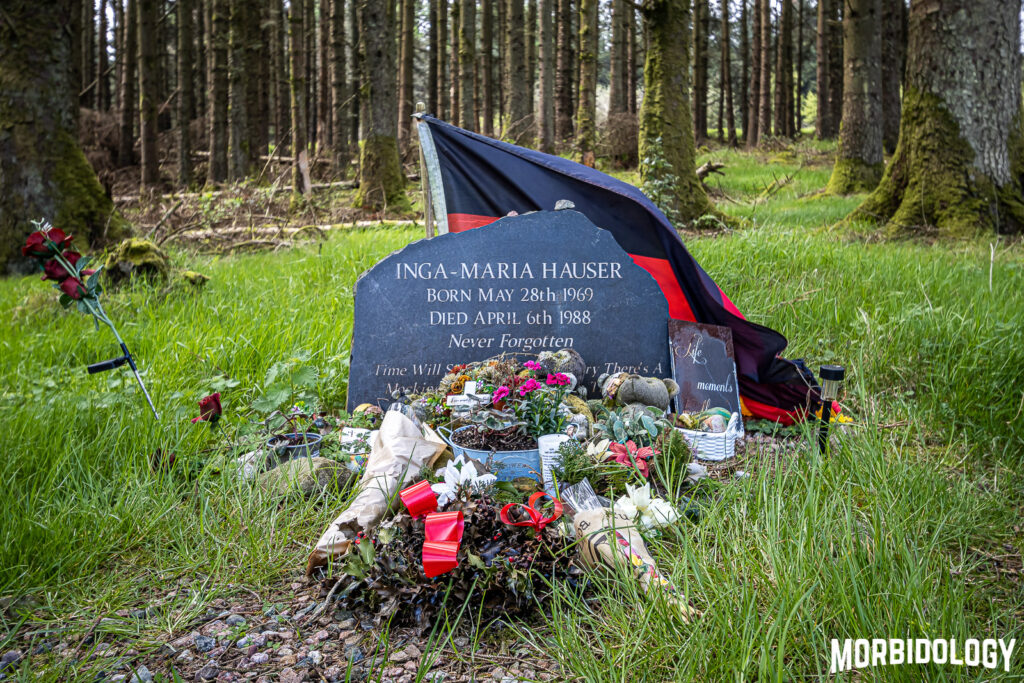
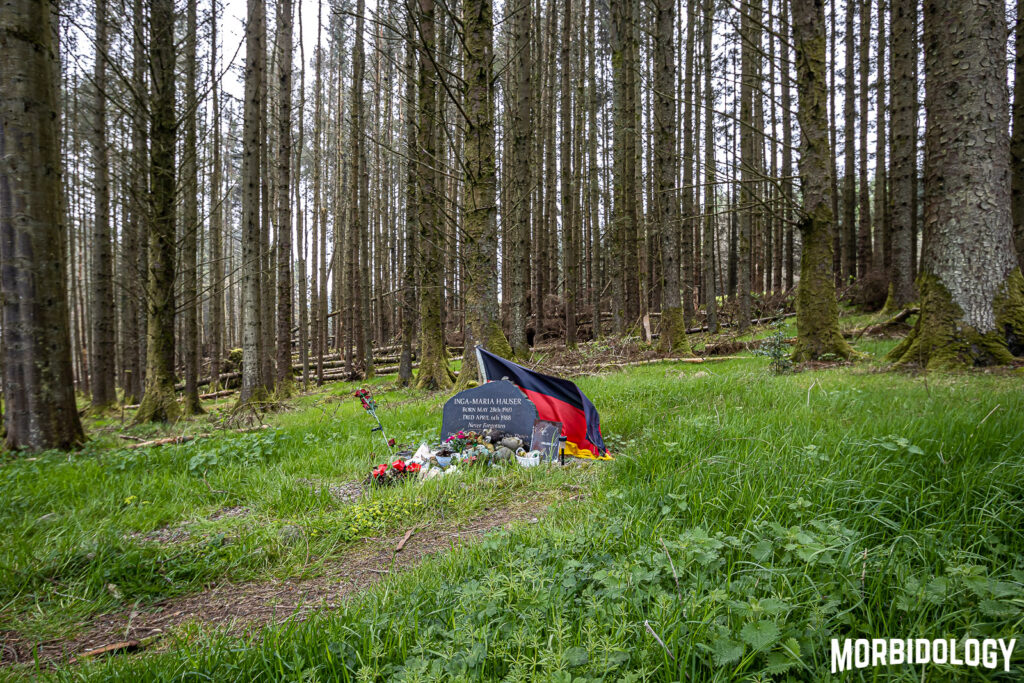
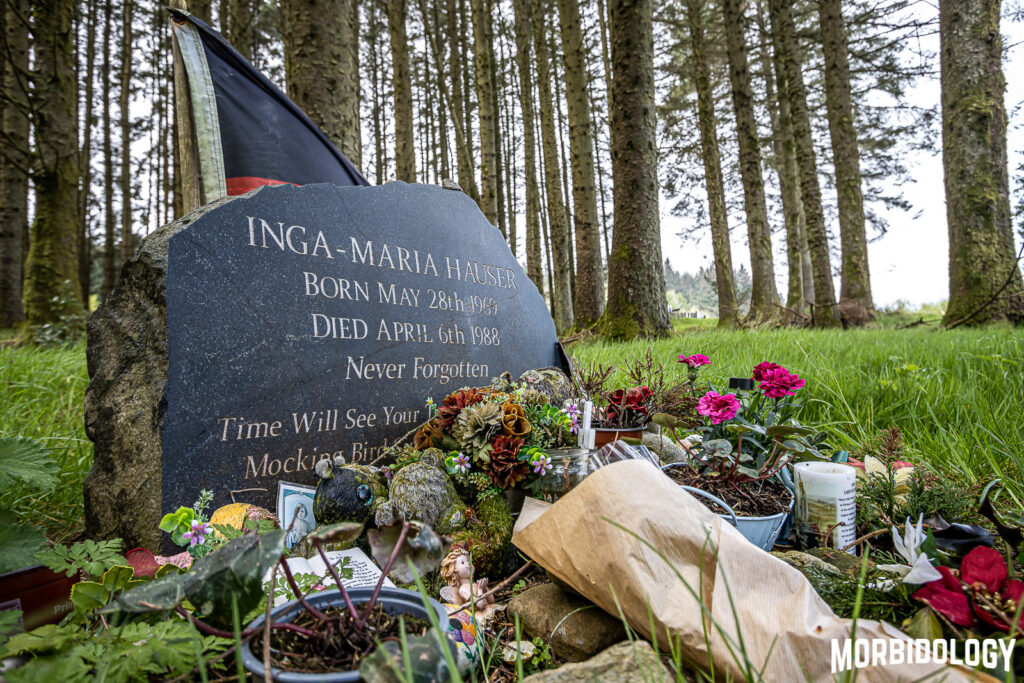
In December of 2019, a memorial stone for Inga was erected in Ballypatrick Forest. Inga was buried in Munich and the people of Northern Ireland were so moved by the tragic case that they wanted a place to gather and to pay tribute to the German student.
The police and many members within the local community believe that the answer as to who killed Inga lies within the local community. The specific spot where Inga was found was off the main road in Ballypatrick Forest, an area where only a local would know.
Footnotes:
- The People, 31 October, 1999 – “New Hunt for the Murderer of Hiker Inga”
- Newsletter, 15 April, 2004 – “Diary Entry May Hold Clue to Tourist’s Murder”
- The People, 18 April, 2004 – “Killer Met Inga on Boat”
- News of the Murder, 21 April, 2002 – “Ulster Murder Victim Held Alive for 2 Weeks”
- Newsletter, 15 April, 2002 – “Appeal Over 1988 Murder”
- The People, 21 March, 2004 – “DNA Clue to Killer”
- Irish Times, 18 April, 2005 – “PSNI Follow DNA Lead in 17-Year-Old Murder”
- News of the World, 21 April, 2002 – “Irish Serial Killer Link to Inga Murder”
- Irish Times, 14 July, 2005 – “New Witness in 1988 German Murder Case”
- Associated Press, 21 May, 2018 – “2 Men Arrested 30 Years After German Teen Death in N. Ireland”
- Irish Times, 8 July, 2020 – “Suspects for Backpacker’s Murder in NI Will Not Face Prosecution”

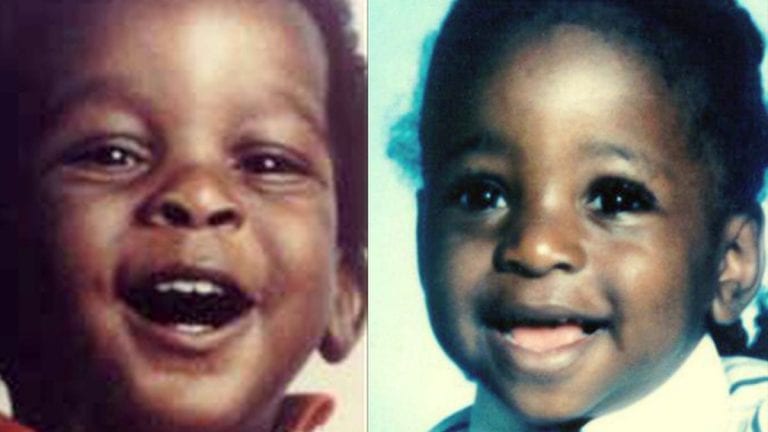

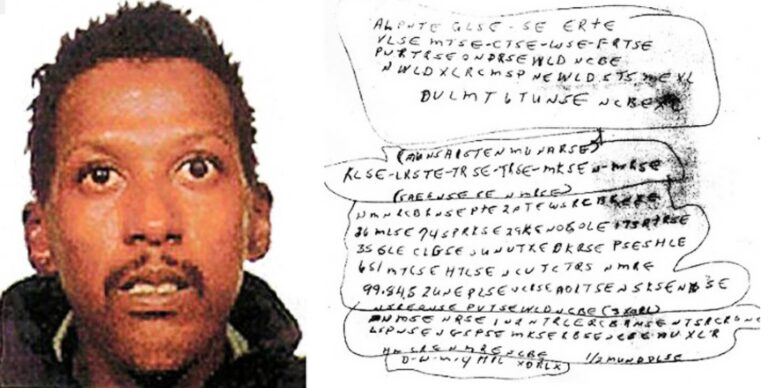
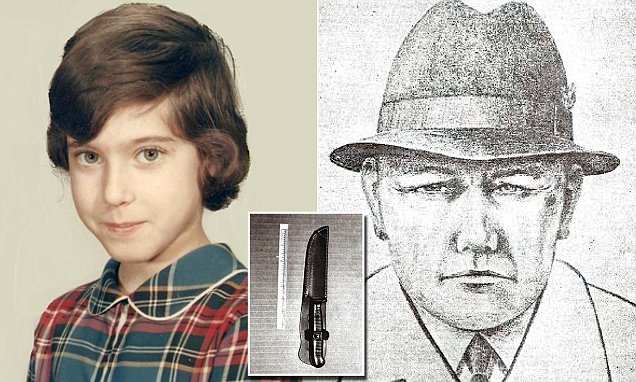
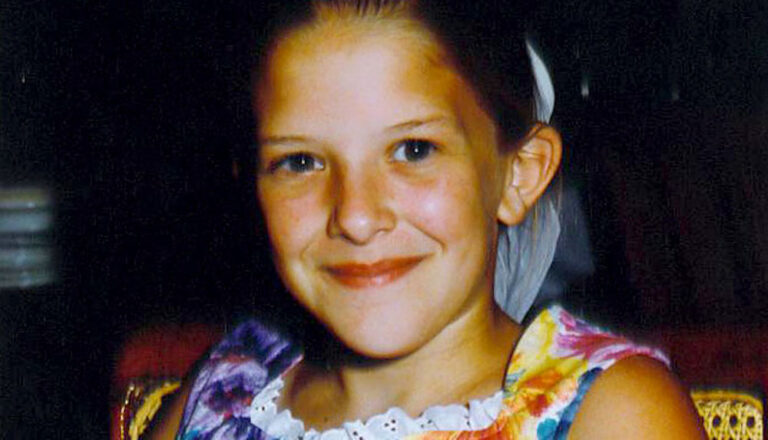
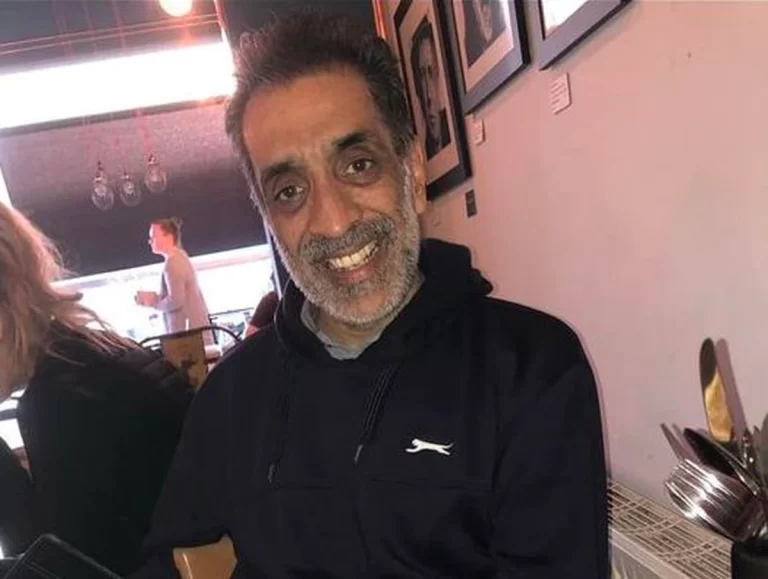
Comments:
May she rest in peace
Could Inga have been killed on the ship and not set foot on Irish soil alive…and was her body kept on board perhaps in a chest freezer or cold room for a number of days before being removed and transported to Ballypatrick forest … Was she drugged in an attempt to rape her and was able to fight back before the rohypnol took affect…. was the killer a member of the ships crew perhaps from the Ballymoney area who won her trust perhaps by offering a free meal and looking after her back pack while she looked around the ship… Read more »
The killer needs caught. The community knows who killed her. Same as Lisa dorrian people know but are saying nothing. Come out and stop protecting a twisted murdering coward